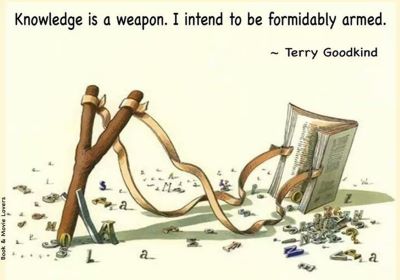Context:
The landscape of military strategy is evolving, challenging traditional notions that emphasize decisive battles and strategic genius as the primary factors in determining winners and losers. Cathal Nolan's book, "The Allure of Battle," argues that in the contemporary era, endurance and technology play a pivotal role in shaping the outcomes of conflicts. As India prepares to draft its first National Security Strategy document, the focus is on accelerating domestic defense production. However, the ongoing conflicts in Ukraine and Israel underscore Nolan's thesis, highlighting the symbiotic relationship between Shaastra (knowledge) and Shastra (weapons).
With the erosion of boundaries between civilian and military technology, the strategy must adapt to encompass advancements in areas such as drones, satellite internet, artificial intelligence, quantum computing, and clean energy. This comprehensive analysis makes a compelling case for the inclusion of a unique goal in India's strategy – positioning at least 10 universities in the top 100 global university rankings by India@100.
Changing Geopolitics and Technological Competition:
India finds itself at the crossroads of shifting global geopolitics, especially in the context of the United States and China. While the U.S. played a role in accelerating China's economic integration into the global economy, recent developments indicate a reversal of policy. The U.S. National Security Advisor aims to restrict China's access to foundational technologies, reflecting a paradigm shift in American strategy. The concept of "friendshoring" is also under scrutiny, as even economic ties between countries are scrutinized for potential national security implications. China, in response, is adopting a self-reliant approach, emphasizing the use of Chinese technologies over foreign alternatives. Meanwhile, Pakistan remains entrenched in a historical conflict with India, refusing to abandon a "1,000-year war" declared by Bhutto six decades ago.
Historical Perspective: American Universities and Military Partnerships:
Drawing from history, the symbiotic relationship between universities and military prowess becomes evident. American universities, notably exemplified by the Massachusetts Institute of Technology (MIT), played a crucial role in supporting the military during World War II. Vannevar Bush, the first dean of MIT's School of Engineering, transitioned to a key position in the National Defense Research Committee and the Office of Scientific Research and Development. This connection between academia and military innovation has persisted over the years, with figures like Frank Terman, a MIT doctoral student, contributing to the birth of Silicon Valley. The historical context underscores the significance of universities in shaping technological advancements crucial for national security.
The Controversy of Global University Rankings:
While the idea of positioning universities in global rankings is a contentious one, it cannot be denied that these rankings hold substantial influence. Critics argue that such rankings are popularity contests, unreliable, incomplete, ideological, and unequal. They contend that rankings may not accurately reflect the true quality of education, often reducing it to metrics like graduate salaries. Additionally, the question arises about how to weigh the importance of various disciplines – the sciences that extend life or the humanities that make life meaningful.
The Significance of Global Rankings:
Despite the criticisms, global university rankings are influential, shaping the aspirations and strategies of educational institutions worldwide. A majority of universities globally have set ranking goals, using them as tools for management and publicity. Examining the QS Top 300 universities reveals key factors influencing rankings, such as institution size, budgets, age, and internationalization. China's success in having 71 universities in the top 500 is attributed to strategic initiatives launched over the years. In contrast, India, with only 11 universities in the top 500, is poised to improve its standing through targeted interventions.
Strategic Interventions for India's Universities:
To elevate India's performance in global university rankings, a multi-faceted approach is proposed.
● First, a select group of 20 government universities should receive substantial investments, fostering large research offices, industry liaison offices, and incentives for extramural funding.
● Second, the consolidation of independent research labs into these top 20 institutions is recommended, following the successful model of Paris Saclay.
● Third, a concentration of government research funding to universities, mirroring the U.S. model, can significantly boost research capabilities.
● Fourth, incentivizing corporate research at local universities through tax deductions can create synergies between academia and industry.
● Finally, a performance-based funding mechanism, allocating untied funds to departments or institutions showing the most significant improvement in research metrics and rankings, can further drive excellence.
Military Transformation and the Role of Universities:
India's security landscape is undergoing a transformative phase marked by intelligent procurement, a shift in spending toward capital expenditure, integrated commands, cross-border strikes, abrogation of Article 370, and participation in the QUAD partnership. The proposed Defense Technology Council, chaired by the Prime Minister and including key stakeholders from academia and industry, is a commendable step. This collaborative approach can enhance project management, addressing concerns raised by the Comptroller and Auditor General (CAG) regarding adherence to timelines in defense projects.
Conclusion:
In conclusion, the evolving nature of military conflicts and the intertwined relationship between knowledge and weaponry necessitate a holistic approach to national security. India's foray into crafting its National Security Strategy provides an opportune moment to align higher education with strategic imperatives. While global university rankings may have their critics, their undeniable influence makes them a compelling goal for India's strategy. The proposed interventions for elevating Indian universities in these rankings not only align with national security interests but also contribute to the broader goals of research excellence, industry collaboration, and overall societal development. As India strides into the future, the synergy between Shaastra and Shastra, embodied in the collaboration between universities and the defense establishment, is poised to be a linchpin in securing the nation's future.
|
Probable Questions for UPSC Mains Exam
|
Source – Indian Express







